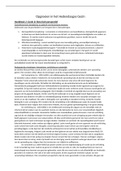Samenvatting
Consumer Marketing (E_MKT_CM) extended lecture notes + summary of all required articles
- Instelling
- Vrije Universiteit Amsterdam (VU)
This document includes all lecture notes for lectures 1 up untill 12, including a summary of all the articles for each week.
[Meer zien]













